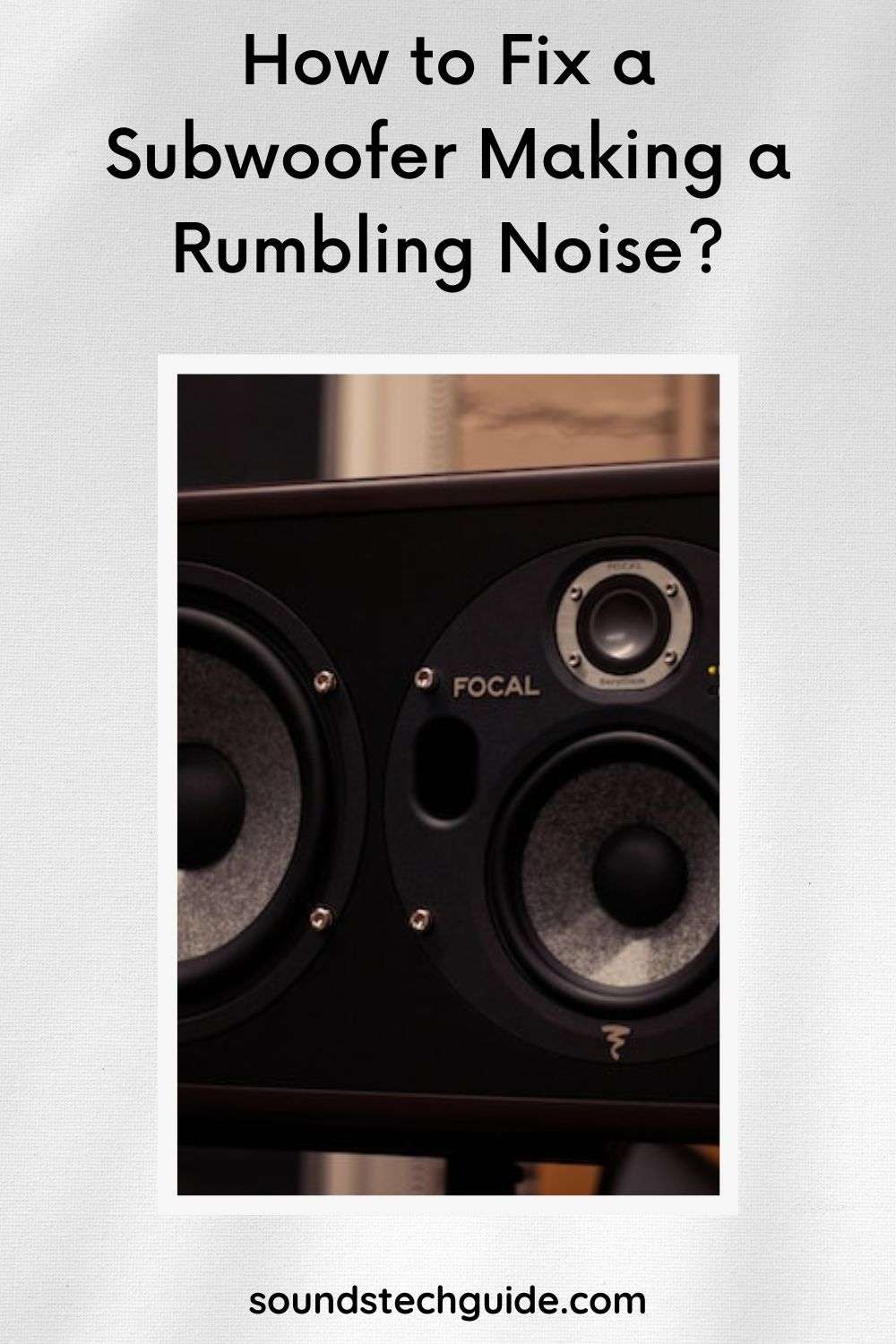Do you love the feeling of powerful bass and depth in your sound system? If so, you probably have a subwoofer that enhances your audio experience. But what if your subwoofer starts making a rumbling noise that sounds like wind or thunder? How annoying is that?
A subwoofer rumbling noise can be a frustrating problem that can affect your sound quality and performance. It can also damage your subwoofer if left untreated. But don’t worry, there are ways to fix it and prevent it from happening again.
In this article, we will explore some of the possible reasons and solutions for subwoofer rumbling noise. We will also give you some tips on how to keep your subwoofer in good shape and avoid rumbling noise in the future.
What Causes a Subwoofer to Make a Rumbling Noise?
A subwoofer rumbling noise can have different causes depending on the situation and the type of subwoofer you have. Here are some of the common scenarios and factors that can lead to subwoofer rumbling noise:
Loose speaker wires
One possibility is that the wires inside the speaker are loose, which can cause the sound to become distorted. This can happen due to wear and tear, poor installation, or accidental damage. To fix this, you need to check the wiring connections and make sure they are secure and not frayed or broken.
Dust buildup around the cone
Another potential issue could be that there’s something blocking the speaker from emitting sound properly, such as dirt or dust. This can accumulate over time and affect the performance of the subwoofer. To fix this, you need to clean the cone and the surrounding area with a soft cloth or a vacuum cleaner.
Gain is too high
If you have set the gain or volume of your subwoofer too high, you may be overdriving it and causing it to produce a distorted or clipped sound. This can also damage your subwoofer in the long run. To fix this, you need to lower the gain or volume of your subwoofer until it sounds clear and balanced.
Bad crossover
A crossover is a device that filters the frequency range of the sound signal and sends it to the appropriate speakers. For example, a subwoofer crossover will filter out the high frequencies and send only the low frequencies to the subwoofer. However, if your crossover is faulty or not set correctly, it may send unwanted frequencies to your subwoofer and cause it to make rumbling noise. To fix this, you need to check your crossover settings and make sure they match your subwoofer specifications.
Subwoofer nearing its lifespan
If none of the above reasons apply, it may be that your subwoofer is simply old and worn out. Subwoofers have moving parts that can degrade over time and affect their sound quality. If your subwoofer is making rumbling noise consistently and cannot be fixed by any of the above solutions, it may be time to replace it with a new one.
How to Prevent Subwoofer Rumbling Noise?
Besides fixing the existing problems that cause subwoofer rumbling noise, you can also take some preventive measures to avoid them in the future. Here are some tips to keep your subwoofer in good shape and prevent rumbling noise:
Choose a suitable location for your subwoofer
The placement of your subwoofer can have a significant impact on its sound quality and performance. Avoid placing your subwoofer in a corner or against a wall, which can cause the sound waves to bounce back and forth and create a boomy, muddy sound. Instead, try placing your subwoofer in an open space away from walls and other objects that can reflect sound waves. You can also experiment with different locations until you find the best spot for your subwoofer.
Use sound deadener
A sound deadener is a material that absorbs sound waves and reduces unwanted vibrations and noises. You can use a sound deadener to insulate your subwoofer enclosure and prevent it from rattling or resonating with other surfaces. You can also use a sound deadener to cover any gaps or holes in your car or home where sound waves can escape or enter. This will improve the acoustics of your space and reduce external noises that can interfere with your subwoofer.
Use an anti-vibration pad
An anti-vibration pad is a device that isolates your subwoofer from the floor or other surfaces and reduces the transmission of vibrations and noises. You can place an anti-vibration pad under your subwoofer to prevent it from shaking or moving and causing rumbling noise. You can also use an anti-vibration pad to protect your floor or other surfaces from scratches or damage caused by your subwoofer.
FAQs
Here are some frequently asked questions and answers about subwoofer rumbling noise:
Q. How do I know if my subwoofer is blown?
A: A blown subwoofer is a subwoofer that has been damaged beyond repair and cannot produce sound anymore. Some signs of a blown subwoofer are: no sound, distorted sound, smoke, burning smell, or visible damage to the cone or surround. If you suspect your subwoofer is blown, you should stop using it and replace it with a new one.
Q. How do I fix a ground loop?
A: A ground loop is a common cause of humming or buzzing noise in subwoofers. It occurs when there is a difference in electrical potential between two devices that are connected by a common ground. This creates a loop of current that interferes with the sound signal. To fix a ground loop, you can try the following solutions: use a power strip with surge protection, use a ground loop isolator, use a cheater plug, or rewire your system.
Q. How do I stop my subwoofer from rattling?
A: If your subwoofer is rattling, it means that something is loose or vibrating inside or outside the subwoofer. To stop your subwoofer from rattling, you can try the following solutions: tighten the screws and bolts, check the wiring connections, clean the cone and the enclosure, lower the gain or volume, adjust the crossover settings, use a sound deadener, use an anti-vibration pad, or replace the subwoofer.
Conclusion
A subwoofer rumbling noise can be a frustrating problem that can ruin your enjoyment of music, movies, or games. However, by understanding the possible causes and solutions for subwoofer rumbling noise, you can fix it and prevent it from happening again.
In this article, we have covered some of the common reasons and solutions for subwoofer rumbling noise. We have also given you some tips on how to keep your subwoofer in good shape and avoid rumbling noise in the future.
We hope this article has helped you learn how to fix a subwoofer making a rumbling noise and improve your sound system. If you have any questions or feedback, please feel free to leave a comment below.
Featured Photo by Yassine Khalfalli on Unsplash
You might also like,
How to Fix Subwoofer Cuts Out When the Bass Hits: A Complete Guide

